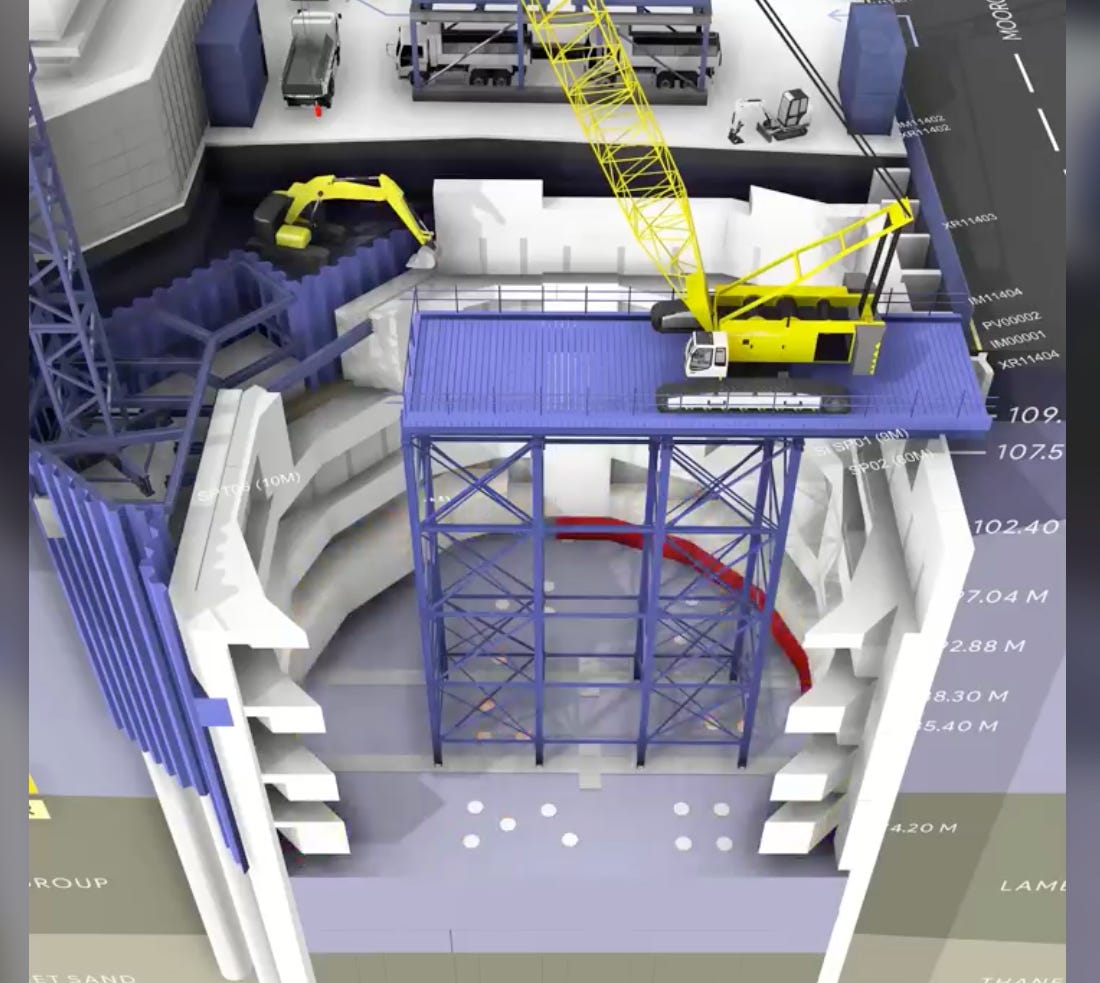CA12 - Architects won’t save the world
Why collaboration is more important than ever.
THE TOPIC - COLLABORATION
It’s hard to overstate the importance of collaboration within the AEC industry. We all rely so heavily on each other to get a building built. A few obvious examples:
Owners rely on architects to design their vision.
Architects rely on engineers to design building systems.
Contractors rely on subcontractors to build each part
Subcontractors rely on our drawings to build it right
It’s one big circle of each person in the chain relying on the work and information provided by someone else. A few months ago I wrote a post about this idea that got over 300k views, why? Because there are so many people involved in the design and construction of a building.
So what does this have to do with carbon you ask? Well, A LOT. The reality is that I talk a lot about what architects can do to lower the impact of their buildings, but I often fail to mention the importance of every consultant doing their part. We collaborate on the design of a building, for months and months going back and forth to come up with the best solutions for the project and make sure each system works with the others. It’s a continual dance that involves each consultant adjusting their design to suit other parties on the team. It’s actually quite a beautiful process.
When it comes to carbon, each consultant has a different role to play in the design of low-carbon buildings. The owner may have a sustainable vision for the project, but without a team of engineers and consultants who share that vision, the project will not succeed. Let’s look at a few examples:
Structural Engineers - Most influential on embodied carbon design.
Mechanical Engineers - Critical in selecting low-carbon heating/cooling systems
Electrical Engineers - Important in fully electrified buildings
Envelope Consultant - Most impactful on the airtightness of the envelope
Energy Consultant - Ensuring the right carbon reduction strategies are in place
Contractor - Offering low-impact alternatives & local options
Creating teams of consultants and contractors who can work together to achieve a common goal will exponentially push the industry forward. How are you helping push this forward on your team?
THE GRAPHIC
WHY IT MATTERS
Collaboration matters for three primary reasons:
Rowing in the same direction
You are the expert
Innovation requires diversity
Let’s dig a little deeper:
1 - Rowing in the same direction
Have you ever heard the phrase - “pushing a rope uphill”? Well, that’s exactly what it’s like when you are working on a project without any collaboration between consultants. Every decision is difficult, and every decision takes additional time. When designing low-carbon buildings it’s critical that teams align themselves in the same direction and work together to complete the project. Architects and owners can set ambitious targets, but if each member of the team is rowing towards a different target, the project will not get to its destination.
2 - You are the expert
Architects are required to know a little about a lot of things. From mechanical and electrical systems to construction methods and techniques an architect can’t properly design a building without a basic understanding of all the pieces involved. However, that knowledge is limited and thus the importance of each discipline raising its specific carbon reduction strategies. We need experts in every field looking at new and better ways to design and construct buildings.
3 - Innovation requires diversity
Solving the problem of carbon in architecture is massive and will require significant innovation over the next 30 years. Innovation doesn’t happen in a vacuum, unless of course, you are inventing a vacuum in which case all bets are off. For true innovation to occur there needs to be diversity and collaboration within groups. Creating new solutions to complex problems requires a variety of perspectives and will require us all to work together to formulate solutions.
1 TIP TO REDUCE
This week I challenge each one of you no matter your field of work, your title, or your current project to raise one question about the current status quo as it relates to carbon. Here are a few examples:
“Why is it our default to specify this insulation, is there a better option?”
“Is this element really necessary? It adds a lot of carbon to the project and seems useless”
“Why don’t we drive together when we go to site?”
1 PERSON TO FOLLOW
If you’re on LinkedIn and are in construction you’ve probably seen James Bowles amazing 4D construction planning videos. They are AWESOME. Well, you probably didn’t know that James is also an amazing human and a passionate founder of ZERO. He is definitely worth a follow.
1 RESOURCE TO ACT ON
I’m a member of ZERO - a global AEC industry group that is focused on bringing a diverse group of people together to share knowledge, push for change, and collaborate. Membership is free and you should be a part of it. We are building a decarbonization playbook and have communities to develop and share knowledge. Join ZERO and be part of the change.



